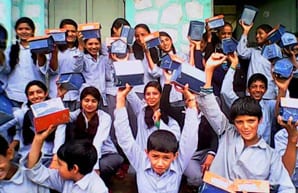Low-income youth in developing countries will save their money in a formal account when given the right opportunity.
That’s a key point in a groundbreaking study called YouthSave, shared by Lissa Johnson, director of administration for the Center for Social Development (CSD), at the YouthSave Learning and Exchange Event in Washington, D.C., this month.
YouthSave, a five-year study supported by The MasterCard Foundation, investigates the potential of savings accounts as a tool for youth development and financial inclusion in four developing countries. In partnership with Save the Children, financial institutions in each country launched YouthSave accounts early in 2012 and marketed the accounts primarily to low-income youth ages 12-18.
Across the countries of Colombia, Ghana, Kenya and Nepal, more than 10,000 youth participating in the YouthSave study saved $519,127 over an average of six months.
“At this early stage, it’s not as much about the amount they have saved as it is that they are opening these accounts,” Johnson says. “I think the demand is there. They key is to get financial institutions to offer quality, affordable products and services that are both attractive and accessible to youth.”
Johnson and a YouthSave team, including research partners in each country, recently published first-year findings in a CSD research report entitled “Savings Patterns and Performance in Colombia, Ghana, Kenya and Nepal.” This report was a central topic of discussion when project partners convened in Washington, D.C., Sept. 13-14 to discuss outcomes, challenges and strategies of the initiative.
The youth who have opened YouthSave accounts include both girls and boys and come from a wide variety of backgrounds. Many are from low-income families, with some from households that were previously unbanked. Through this opportunity, the youth are beginning to move themselves and their families toward greater financial inclusion.
Researchers are finding that “taking the bank to the youth” is effective, Johnson says. Financial institutions in Ghana and Nepal offer financial capability activities – which include financial education, account enrollment and depository services – at schools. The association of participation in these activities with account uptake is positive and significant.
In Kenya, the financial institution also offers opportunities for youth to open savings accounts at schools. Based in part on these successes, the financial institution in Colombia is now visiting schools with Save the Children to provide similar services.
“We often talk about the importance of providing financial education to young people, but what has frequently been left out of the equation is the opportunity to actively use their knowledge and skills safely and productively through mainstream financial institutions,” Johnson says. “The experience, of course, is its own form of financial education. These youth are getting that opportunity through the savings accounts, and they are responding to it.”
The savings data will be linked to an experiment in Ghana that will test the impact of YouthSave accounts on youth developmental outcomes, including academic achievement, health, future orientation and expectations, and financial capability.
Johnson says the conference in Washington, D.C., emphasized the fact that many questions remain about youth savings in developing countries. “This data gives us some answers, but those answers lead to more questions,” she says.
The team will continue to track savings activity and characteristics associated with savings performance over the final two years of the study. Using other research methods, such as case studies, the Ghana experiment, and other experiments in Colombia and Kenya, the group expects to learn a lot more about who opens accounts, what product and service features promote savings, and the impact of savings on youth development.
The YouthSave study will run through 2015.
